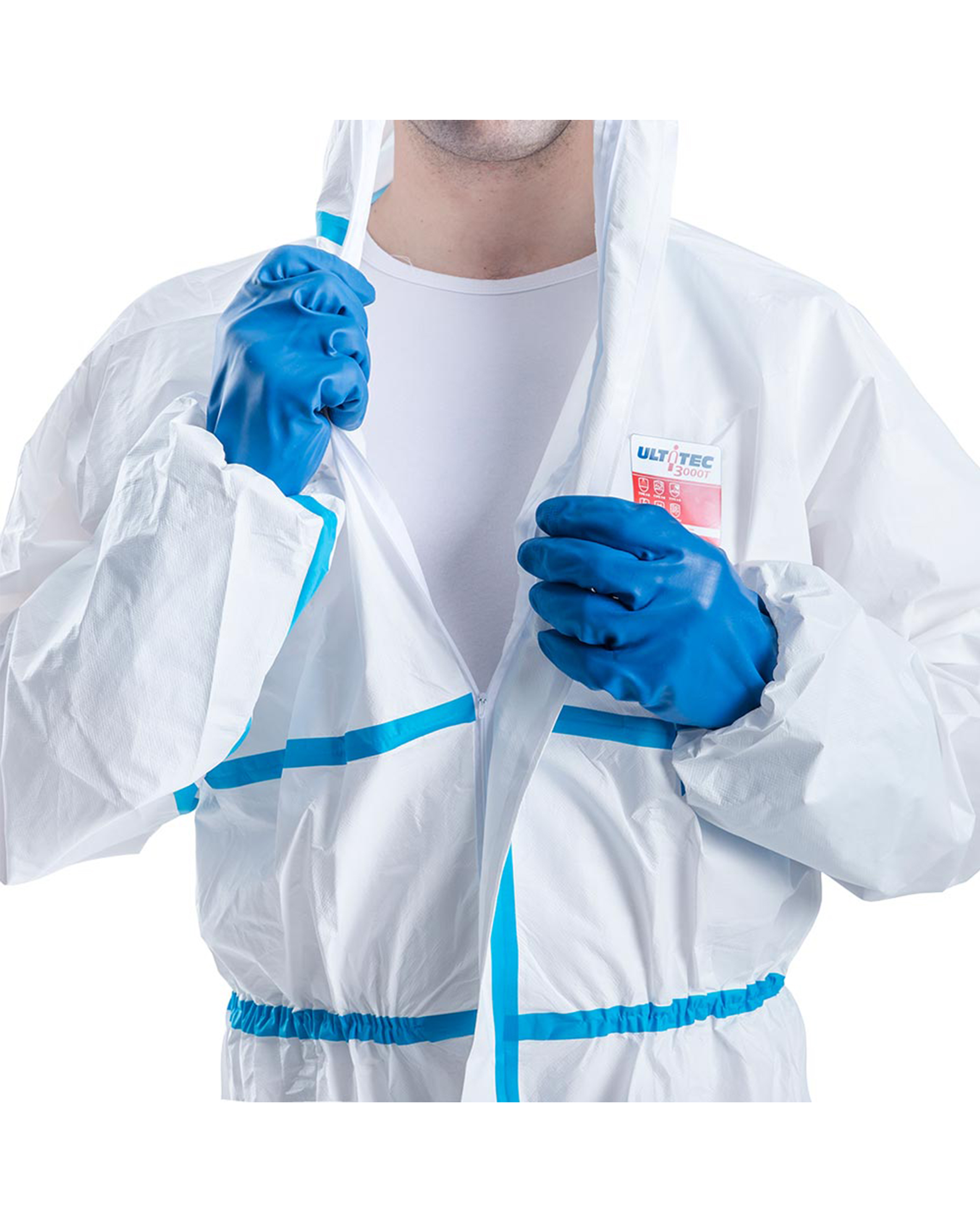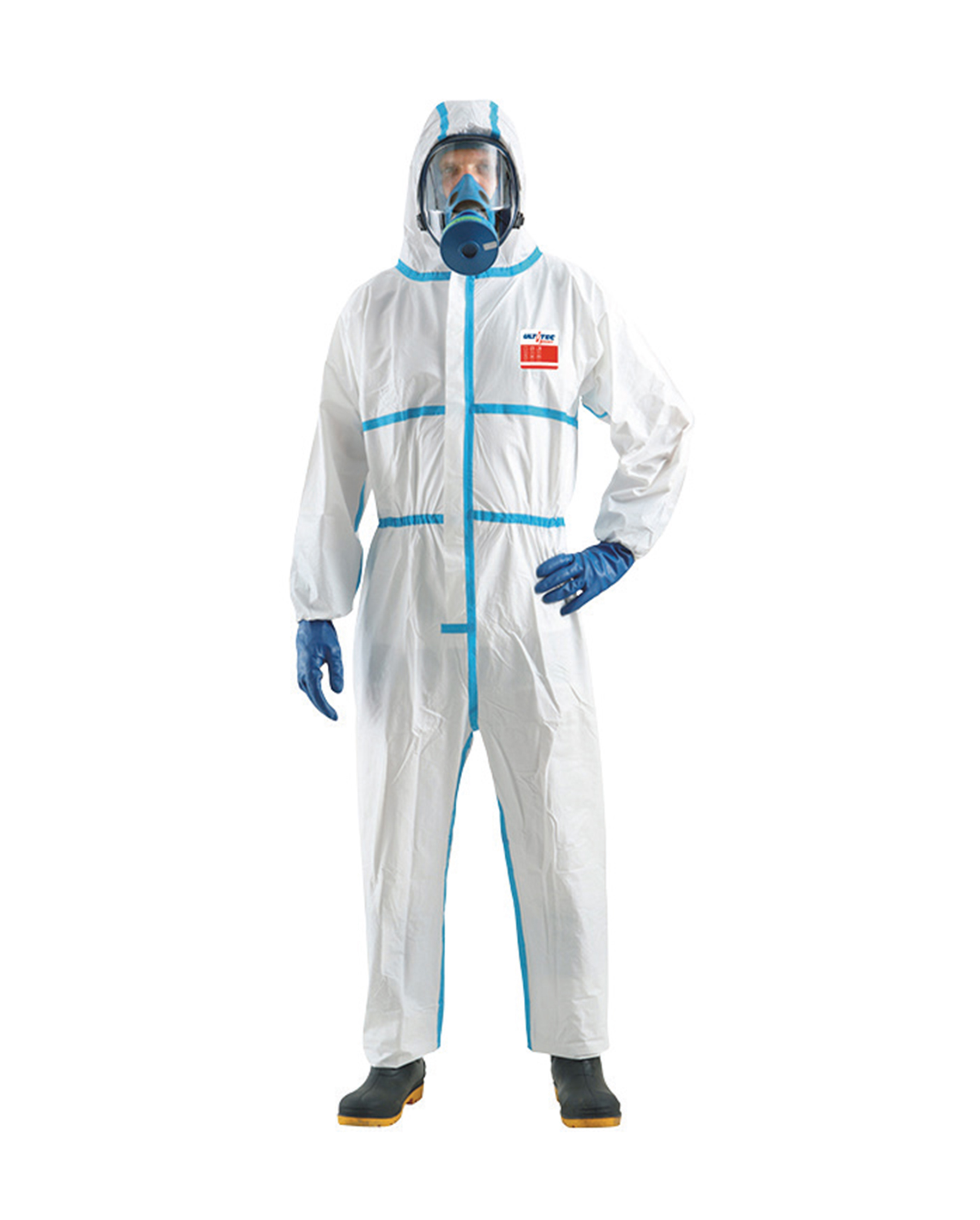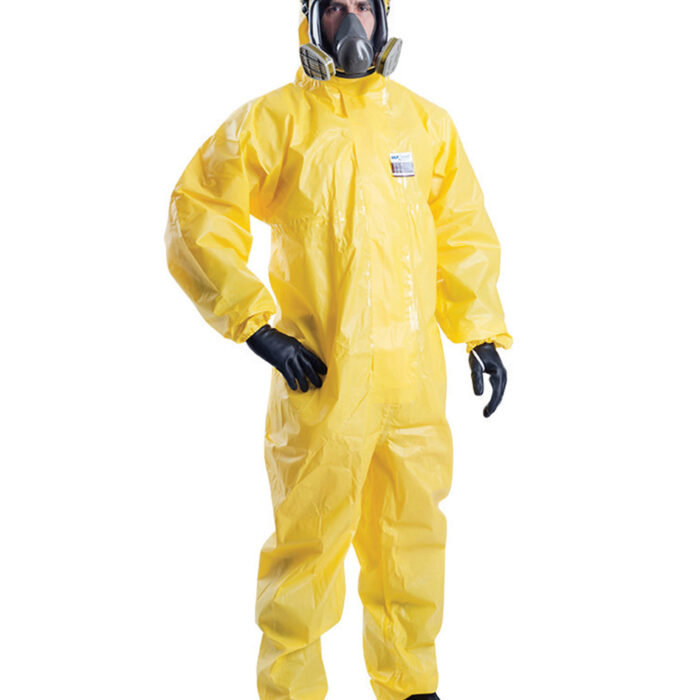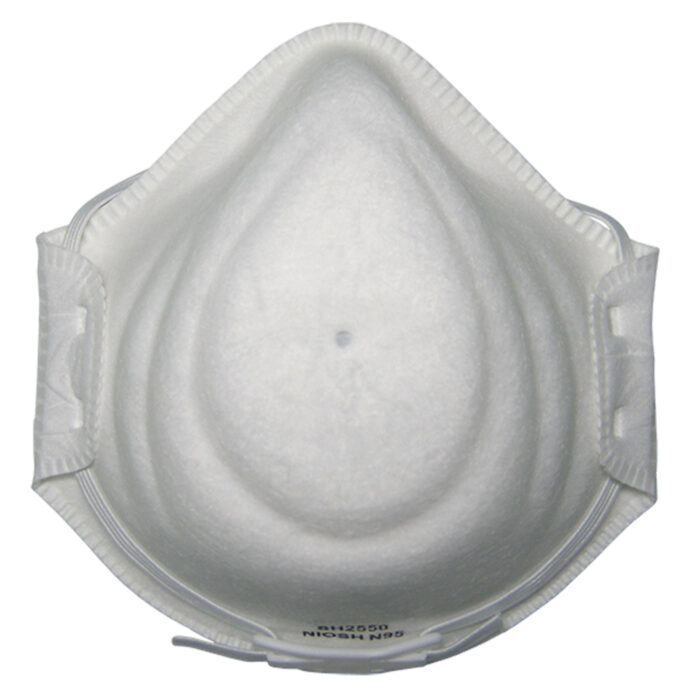Designed as an effective barrier to saturated liquid splash. It combines liquid-proof fabric with sealed tape seam while keeping breathable with Type 4 certification.
- TYPE 4 EN 14605 Spray Tight Suits- Suits which can protect against saturation of liquid chemical, where volume of the liquid builds up on the suit forming pools, resulting in rivulets.
- TYPE 5 EN ISO 13982-1 Dry Particle Suits-Suits for protection against hazardous dusts and any dry particles.
- TYPE 6 EN 13034 reduced spray -suits which offer limited protection against a light spray of liquid chemicals.
- EN 1149-5 Electrostatic dissipative protective clothing with a surface resistance of maximum 2.5×10 exp 9 ohm.
- EN 1073-2 Protective clothing against particulate radioactive contamination.
- EN 14126 Protective clothing can resist against biological hazards and infective agents.
- DIN 32781 Protective suits against pesticides.
Seam Construction
4-thread overlocked seam with liquid-proof tape
- 7-9 stitches per inch
- Thread fibre is 150D
- Bite depth at 4mm
Fabric Construction
- Microporous Film laminate PPSB
- MVTR is above 2500 gsm / 24hr (ASTM E96 BW)
- Hydro-head is above 2500 mm-H2O(EN 20811)
Features
An effective barrier against blood, body-fluid and infective agents
- The fabric performance exceeds both WHO protective clothing specification option 1 & 2 for Ebola infection
control. [Note*]
Proven protection against pesticides - Meets DIN 32781 requirement on pesticide penetration and comfort for agriculture application.
Breathable to Work Efficiently - Designed for comfort use. Allow wearers to work efficiently while releasing their body heat to prevent heat
exhaustion.
Low Linting - Reduces risk of fibre contamination in workplace.
Sealed seam offers premium protection - Liquid-proof tape on seam to ensure wearer being protected with no seepage.
Note*: The WHO recommended specification for coveralls against filovirus disease issued in Oct, 2014 stated that healthcare workers should choose appropriate protective apparel, which meets the following two requirements:
option 1, tested for resistance to blood and body fluid penetration: meets or exceeds ISO 16603 class 3 exposure pressure
option 2, tested for resistance to blood-borne pathogen penetration; meets or exceeds ISO 16604 class 2 exposure
pressure.
Applications
Agriculture, Automotive, Biological Hazards, Chemical Plants, Disaster Management, Petrochemical, Pharmaceutical





Reviews
There are no reviews yet.